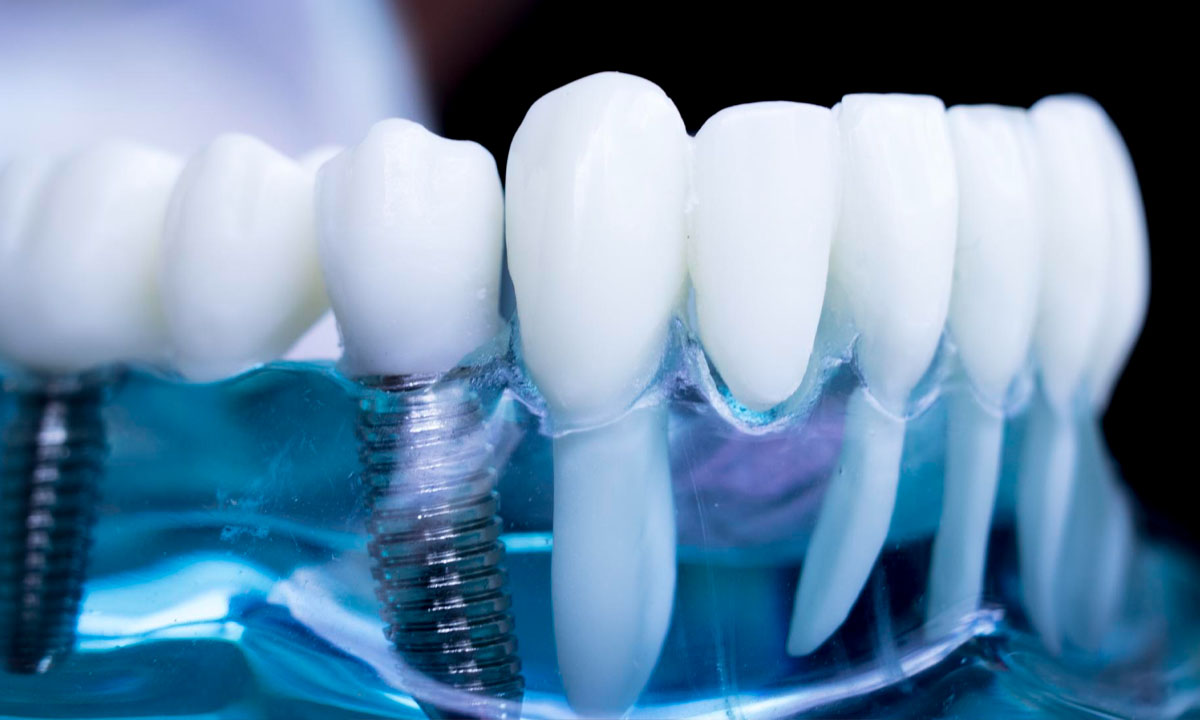
Can You Eat with A Dental Implant?
April 10, 2024
What are the Parts of a Dental Implant?
April 24, 2024Dental implants are designed to integrate the implant structure, fusing with the jawbone, which is called Osseointegration. The surgical procedure consists of settling the implant and adapting the surrounding tissue. One-stage surgery provides and prioritizes the benefit of elegance but involves a higher risk of failure, while two-stage dental implant requires two surgical procedures yet provides a higher rate of success. Whether to have a one-stage or a two-stage implant procedure depends on different features, such as aesthetic scrutiny and bone quality.
This blog will take a look at the topic of one-stage vs. two-stage dental implants.
How Many Stages of Implants are There?
There are two main surgical stages: one-stage vs. two-stage implant surgery. One-stage surgery involves placing the implant and allowing healing support to come through the gums. Initially, some steps of tooth implant procedures are to be expected prior to considering one-stage vs. two-stage dental implants, such as initial consultation and getting ready for the procedure.
What is a Single Stage Dental Implant?
Also known as a single piece, on-stage dental placement is designed to place the tooth/teeth through a one-stage surgery procedure. In this case, the implant is placed into the jaw bone and remains to be fused.
What is the Two-Stage Technique in Dentistry?
Before we discuss one-stage vs. two-stage dental implants, let us also discuss two-stage implant placement. The two-stage approach is usually used for replacing teeth where aesthetics is not necessarily a priority. When the dental implant has fused to the bone, the second-stage surgery can begin.
Find Out More: Ahwatukee Snap-on Smile
What are the Differences Between Stage 1 and Stage 2 Implants?
The differences between one-stage vs. two-stage dental implants are according to their procedures and approach. Although they have common grounds, such as bone stability and Osseointegration, some features differ in each method. Their distinctions respectively focus on:
- Placement: In a one-stage implant procedure, placement is instant, while it is delayed in a two-stage surgery, commonly taking a few months.
- Pain: Swelling and discomfort are higher during the first stage of dental implant surgery than during the second stage.
- Success rate: Two-stage implant procedure has a higher success rate than one-stage surgery.
- Risk of infection: Because the soft tissue around the dental implant is sealed in one-stage surgery, there is no risk of bacterial infections. However, because the two-stage surgery is performed over a few months, infection is more possible.
- Invasion: The dentist makes an incision in the gum to access the jawbone beneath and place the dental implants. Overall, one-stage dental placement is less invasive than two-stage surgery.
- Osseointegration: There is immediate Osseointegration in one-stage dental placement, while it is prolonged in the two-stage implant surgery.
- Appearance: In a one-stage procedure, quick aesthetics is a priority so the patient would have a natural look where there is a missing tooth in the two-stage dental implant
- Timing: Typically, one-stage surgery is a one-time procedure, and therefore, it is less time-consuming than two-stage surgery.
- Budgeting: One-stage procedure is cost-effective, while two-stage surgery has excessive cost.
- Recovery: Dental implant stage-one recovery is shorter (approximately 3 weeks) than recovery from a two-stage implant procedure, which is 3 to 6 months.
You can consult with our dentists to make sure you are well-prepared for each procedure. Regarding the quality and amount of bone you have at the time of surgery, the type of the selected procedure is specified.
What is the Disadvantage of One Piece Implants?
In spite of the quick procedure of the one-stage implant placement, it turns out to have less flexibility than the two-piece implant because of their single-unit construction, a matter of versatility in the topic of one-stage vs. two-stage dental implant. Such lack of flexibility prevents more detailed modifications and adjustments when placed. The dental implant itself does not break, it is instead the bonding of the dental implant to the bone that can fracture.
What Type of Implant is Most Commonly Used in Dentistry?
The most common type of dental implant is an Endosteal implant. They can be used by many patients, yet they must have healthy jawbones. An endosteal implant is a small screw-shaped blade or cylinder that is placed in the jawbone. Your dentist may suggest this implant if you already have bridges or dentures.
What is the Strongest Dental Implant?
Titanium is the perfect material for implants because it is fracture-resistant in areas subjected to heavy chewing and is cost-effective. Your dentist can prioritize this feature when deciding between one-stage and two-stage dental implants. One of the surprisingly strong and durable implants is Zirconia. Ceramics do not seem to be as durable against breaking as metals, and so they may be exposed to cracks and fractures under chewing pressure.
Conclusion
Dental implants are a surgical procedure that includes two stages, both of which prioritize functionality and beauty. There are differences between one-stage and two-stage implant procedures, which consequently prioritize patients according to their jawbone quality and aesthetic approach. The best dental expert in Ahwatukee might recommend each procedure based on the relevant features.
FAQs
Which dental implants are safest?
Zirconia is a white ceramic that includes both metals and non-metals and is considered one of the safest and most durable dental restoration techniques.
Can you eat dairy after a dental implant?
Dairy products can breed harmful bacteria in the mouth following surgery, affect the healing process, and increase the risk of infection. Therefore, you must avoid dairy products after having a dental implant.
Which implants last longer?
Because Titanium is a non-toxic material, it is durable for dental implants. It is a suitable replacement and commonly lasts for over 30 years. It has a high success rate in both medical and dental procedures.
What are the easiest dental implants?
Mini dental implants are almost half the size of a traditional dental implant. They are easier and less painful to install, with less amount of jaw bone mass than the traditional dental implants require.



